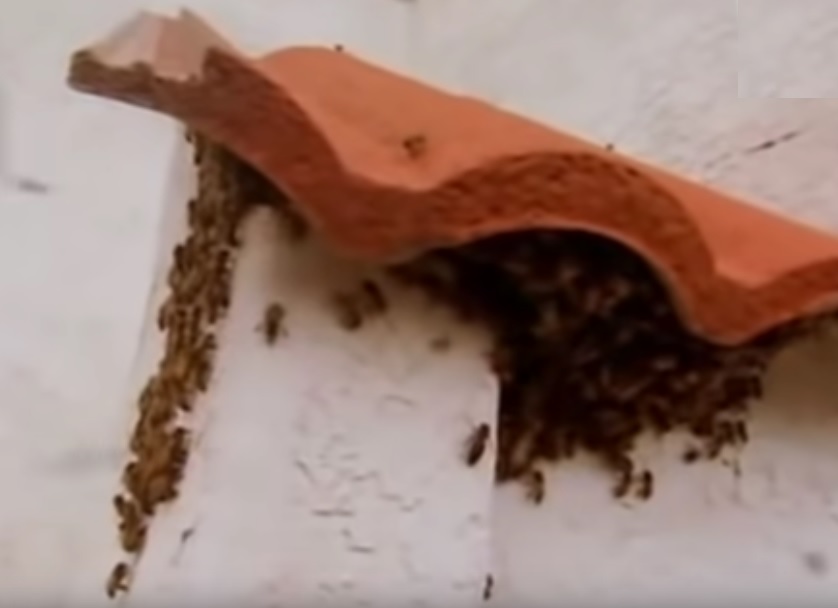Africanized bees

What are they, what dangers do they carry and what territories have they colonized?
Due to some very media attacks in South America, Central America and in some states of the United States, they have become known in the press as the "killer bees". Africanized bees are very irritable and can attack swarms of up to 60,000 bees biting their victims up to a total of 1,000 times even causing the death of people and animals.
Africanized bees are the result of a scientific experiment carried out in Brazil in the 50s consisting of crossing African bees with local European bees from Brazil, creating an Africanized bee hybrid. The result of this failed experiment is that of very aggressive Africanized bees that can chase you up to 400 meters while defending their honeycomb.
African bees have their origin in Tanzania, in southern Africa. They are very adaptable to different habitats and have already spread through Central and South America, and have already colonized up to 9 states of the United States (and continue advancing relentlessly conquering new territories).
Africanized bees are displacing honey bees that have populated Central America, South America and the United States for hundreds of years.
They attack quickly and can remain aggressive for up to 24 hours. They can transform a normal honeycomb of domestic bees into a honeycomb of Africanized bees (and therefore very irritable and dangerous) in a few days. This can lead to a serious danger for both the professional and amateur beekeeper, and a problem of public safety in general.
Why are they so aggressive? Their aggressiveness is due to the fact that in South Africa, these wild bees were adapted to a very hostile environment of Sub-Saharan Africa, with fierce predators such as the honey badger (who eat scorpions, snakes, and love honey), climates extremes (prolonged droughts may occur) and to fight for nectar with other species of the natural environment. It has a very aggressive defensive behavior known as "hyperdefensive," that is, they attack relentlessly and defend large areas of territory to protect their hive from potential predators and keep them away.
The bees, when they sting, stick their stingers (their stingers are torn from the abdomen and then the bees die defending the hive). But even if the bee has died, the stinger continues to pump poison for a minute. Too many bites can lead to anaphylactic shock. There are documented cases in which a honeycomb of Africanized bees in the natural state in the middle of nature or abroad, have come to attack people and animals (in some cases, causing the death of their victims). These cases, being documented in the press, have helped to contribute to social fear and alarm regarding these African bees.
Africanized bees are simple honey bees, but they bite 10 times more frequently and defend a territory three times larger than normal bees. It is almost impossible to differentiate an Africanized bee from a normal honey bee (until its sting is practically the same as that of the normal honey bee), the number of bees that add to the attacks being almost the only difference (sometimes , mortals). In the last 30 years, Africanized bees have already caused about 1,000 deaths.
Africanized bees can nest in places that a normal honey bee would normally despise, and they can found a colony in less than 10 hours (the workers bring honey to feed the honeycomb, and the queen lays thousands of eggs to grow thousands of bees more quickly). The Africanized bee queen will lay eggs for 4 years that will result in up to 600,000 Africanized bees.

Why are African bees replacing European bees in South America, Central America and the United States? There are scientific experiments of artificial insemination of African queen bees with sperm from African drones and European drones. When the African bee queen laid her eggs, the team isolated the larvae, and the newly born Africanized queen bees left 20 days later, but the European queen bees took 1 more days to leave.
This difference of 1 day at birth is the key: the first queen that is born (African bee queen), is the first queen that emits real pheromones, which give her control of all the components of the hive (control over the drones , the workers ...). As soon as the first queen is born, she goes out hunting before the other queens are born and kills the other queens with stingers before they can be born and leave their royal cell. Therefore, the only surviving queen will be the African queen bee.
Another very important key to understanding how the African bee has quickly replaced the European bee in South America, Central America and several states in the United States is that the African bee is immune to the varroa mite. This is precisely because Africanized bees develop much faster than European bees. This prevents varroa mites from causing so much damage to African bees.
Scientists have been unable to avoid its unstoppable progress and colonization of new territories.
In America, beekeepers are on constant alert to keep Africanized bees away from their hives and thus avoid turning their domestic honeycombs into highly aggressive and dangerous honeycombs for the beekeeper and society in general. If they find an Africanized queen (who can lay about 2,000 eggs a day and up to 600,000 a year) they kill her immediately. The African queen can turn a gentle hive into very irritable and aggressive hives (that's why they have earned the nickname "killer bees").
Beekeepers have to be constantly monitoring and monitoring the hives and, if they detect an African queen bee, they eliminate it by killing it and replacing it with a much more docile and submissive European queen. This European queen will emit her pheromones and the hive will accept her, lay eggs and have a much more docile and calm offspring (contrary to what happens with African bees, which are very aggressive and dangerous).
Beekeepers mark their European queen bees to quickly detect if the marked queen disappears or not (if the European queen disappears, it means she has been replaced by an African queen bee) and there is an imminent danger that the hive will Africanize and become aggressive and very dangerous.
African bees have a very effective strategy to invade a hive with European bees: swarms look for hives without queen or with weak queens. Then, they carefully approach and deceive the bees in charge of guarding the entrance to the hive and sneakily introduce their own African queen (who will kill the European queen and gradually transform the entire hive into Africanized bees).
Scientists have also estimated that if a European queen bee is fertilized with at least 25% of African drones, her offspring will also be as aggressive as an Africanized hive. That is why some beekeepers in the United States are trying to prove a possible solution that involves introducing a large number of European drones into hives so that they have a greater chance of mating with the queen and displacing the drones of African race.
A great danger for the expansion of the African bee throughout the world are also cargo ships from South America and Central America, since in the containers you can sometimes find honeycombs that, if not detected, can enter the national territory of the importing country and colonize it as it has already done with South America, Central America and 9 states of the United States.
Mundoabejas.com team









Comments
No comment at this time!
Leave your comment